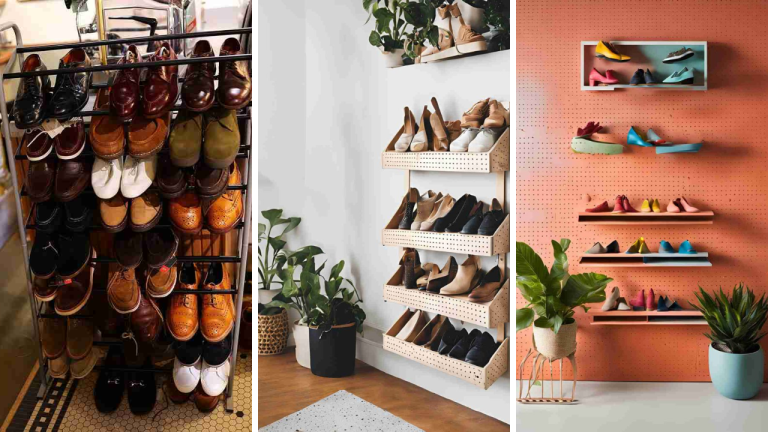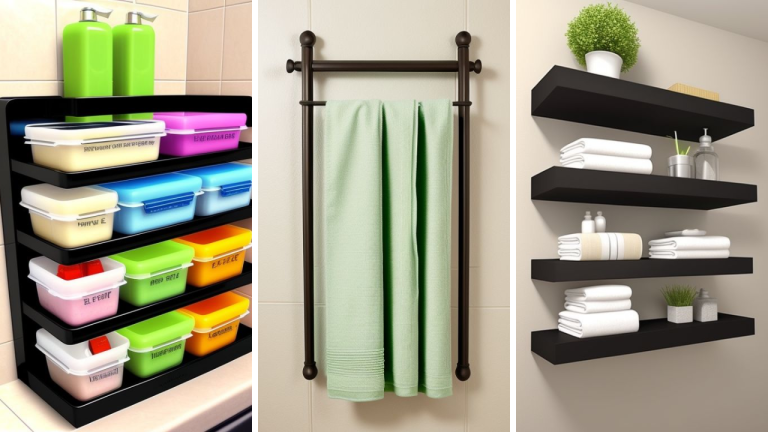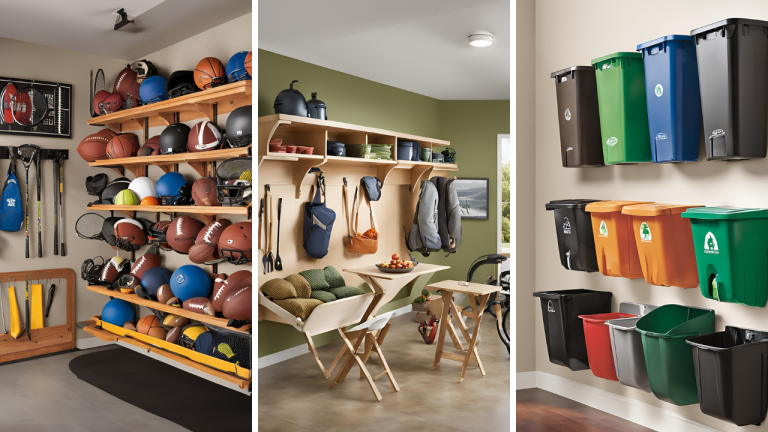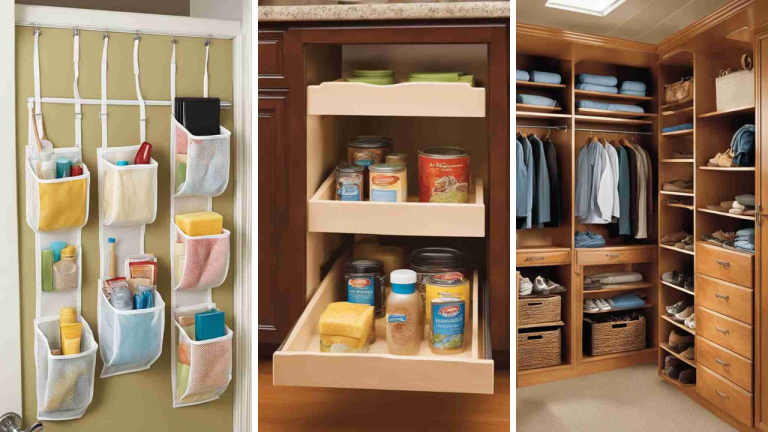Basements often hold untapped potential when it comes to design. Whether you’re looking to create a cozy, functional retreat or a stylish entertainment hub, the ceiling plays a crucial role in the overall ambiance of your space. If you’re ready to transform your basement with ceiling ideas that are both beautiful and practical, you’ve come to the right place.
In this article, we’ll walk you through 27 amazing basement ceiling ideas. From modern industrial looks to cozy wooden finishes, there’s something for every style. Let’s begin with the first idea to help you start rethinking your basement ceiling.
1. Exposed Beams for an Industrial Look
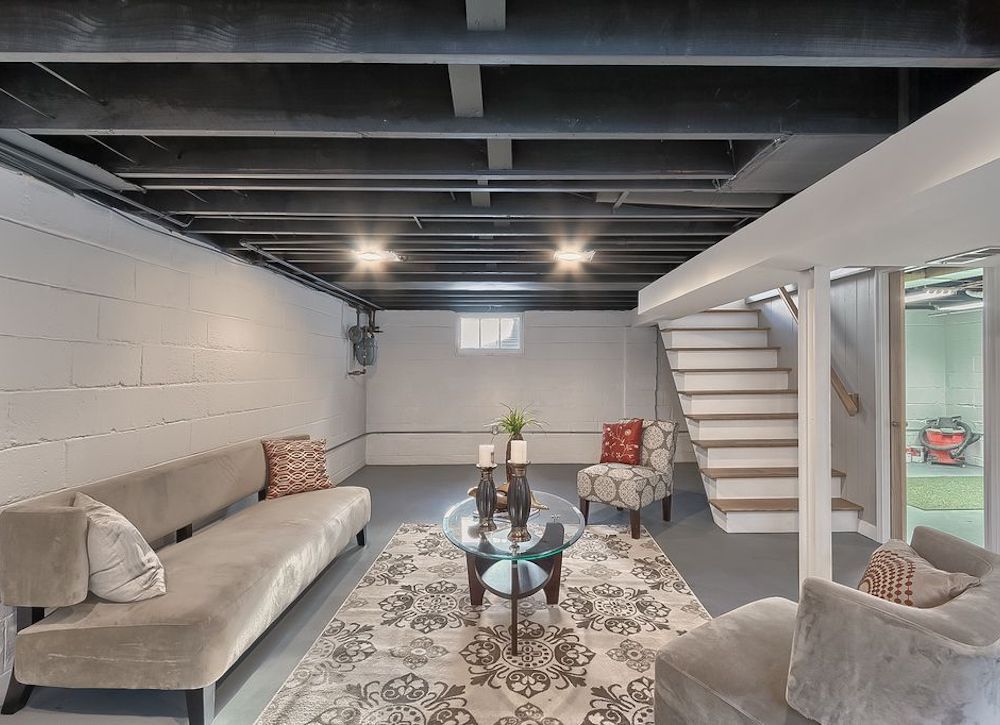
Exposed beams are a standout feature in modern basement designs, offering an industrial and raw aesthetic that instantly elevates the space. By leaving your ceiling beams exposed, you highlight the architectural elements of your basement, giving it a distinctive, rustic charm.
You can either keep the beams in their natural wood form, adding warmth and texture to the room, or paint them in a dark color like black or charcoal to achieve a more industrial, sleek look. This design works especially well in loft-style basements, where the open space and high ceilings are meant to shine.
Pair exposed beams with minimalist decor, such as metal pendant lights or leather furniture, for a modern industrial vibe that combines both form and function.
2. Drop Ceilings for Easy Access
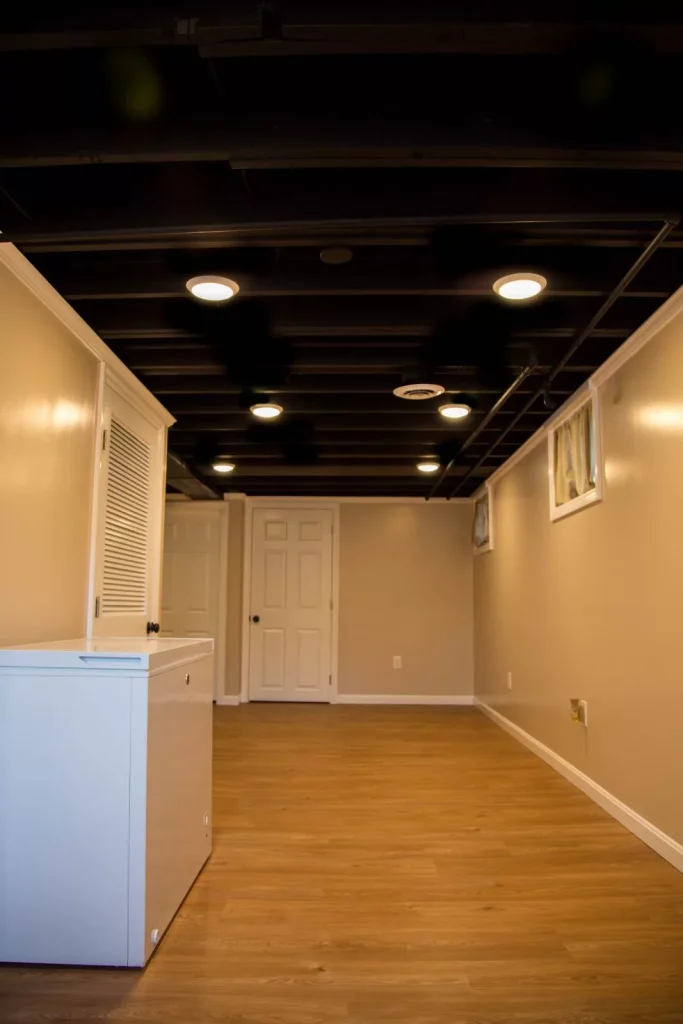
If you’re working with a basement that has a lot of pipes, wires, or other hidden infrastructure, a drop ceiling might be the perfect solution. Drop ceilings are easy to install and provide quick access to utilities, which is essential for maintenance and repairs.
Opt for ceiling tiles that complement your basement’s overall design, whether that means sleek, simple tiles for a modern look or more ornate designs for a touch of vintage flair. Drop ceilings are especially beneficial for basements that double as home offices, media rooms, or workshops, where functionality is key.
This option allows you to hide all the unsightly elements while still achieving a clean and polished ceiling design.
3. Tray Ceilings for Added Elegance
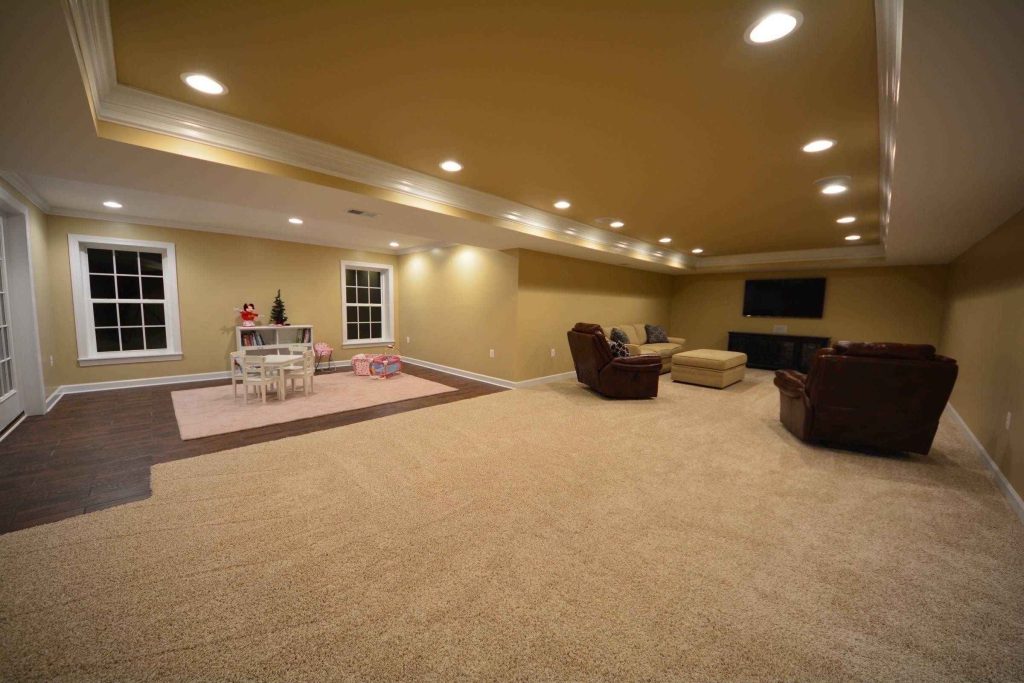
A tray ceiling is a beautiful design element that adds depth and drama to any room, and basements are no exception. By creating a recessed, tiered ceiling, you create the illusion of more height, making the space feel larger and more open.
Tray ceilings are ideal for basement living rooms, home theaters, or dining areas where you want to create an elegant, polished look. The design is highly customizable, allowing you to incorporate various materials like wood, drywall, or even crown molding to enhance the effect.
To further elevate the space, consider adding lighting to the perimeter of the tray, such as LED strips or sconces, to create a soft, ambient glow that highlights the ceiling’s unique design.
4. Coffered Ceilings for Timeless Charm
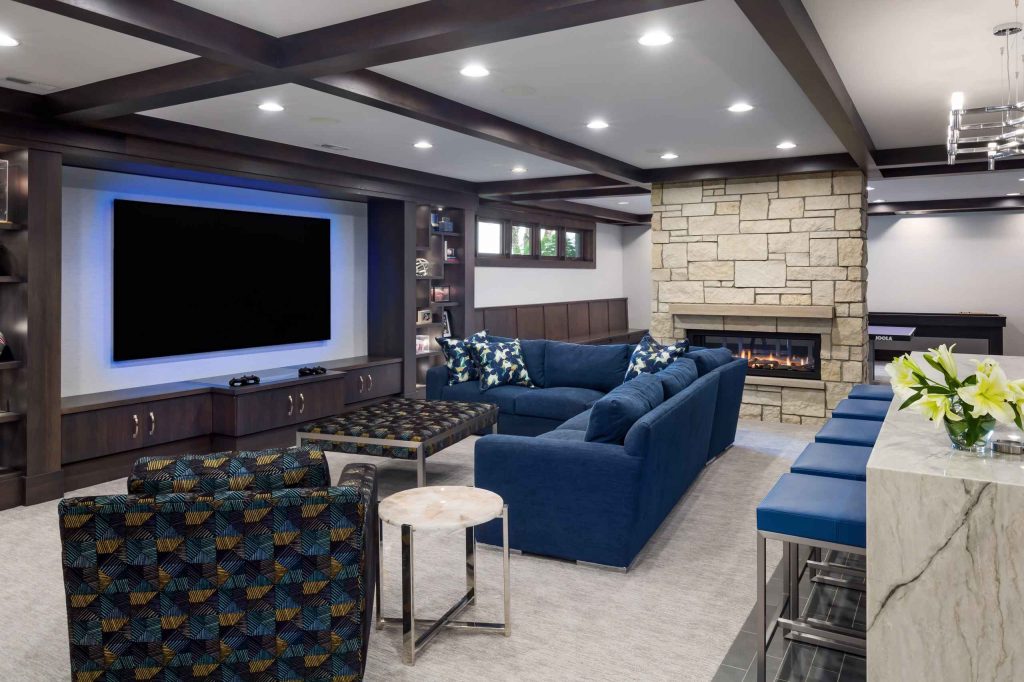
Coffered ceilings are the epitome of timeless design, adding a touch of luxury and sophistication to any space. This classic ceiling treatment consists of a grid of recessed panels, which not only create visual interest but also introduce texture and depth to the ceiling.
In a basement, coffered ceilings can make the space feel more inviting and grand. The intricate design pairs well with traditional or transitional styles, but can also be adapted for a more modern aesthetic with clean lines and sharp angles.
For an added touch of elegance, you can paint the coffers in a contrasting color or use materials like wood or faux wood for a more natural feel. Coffered ceilings also work well in basements that double as a formal living room, dining area, or home office.
5. Wood Panel Ceilings for Warmth
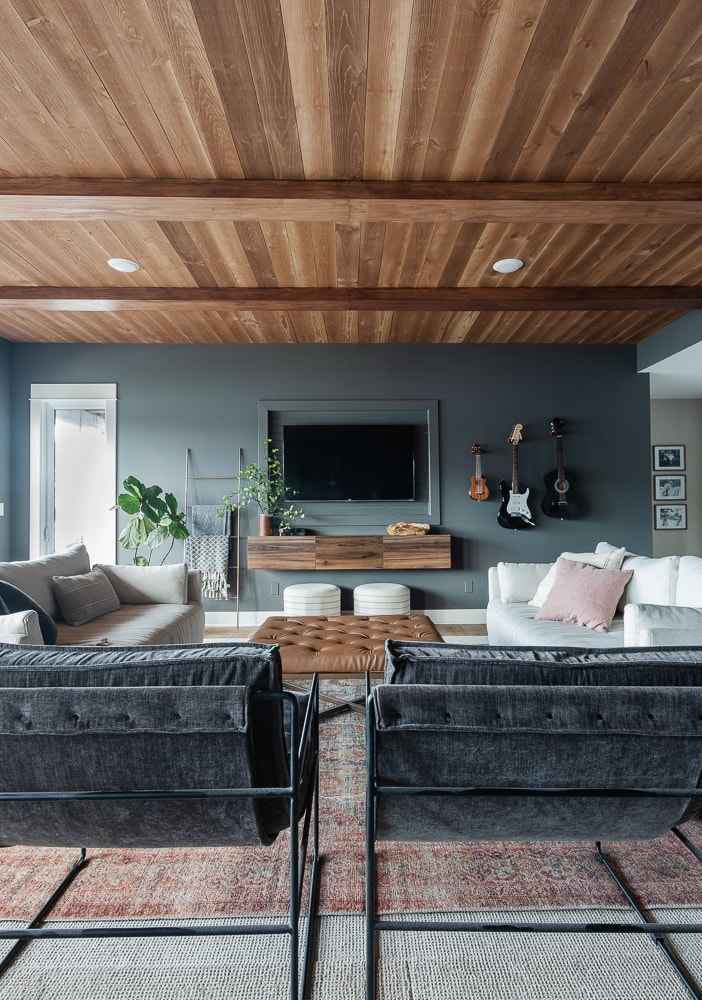
Wood panel ceilings are a fantastic way to add warmth, texture, and a cozy vibe to your basement. Whether you prefer the natural charm of raw wood or a more polished, painted finish, wood paneling can make the space feel inviting and comfortable.
In smaller basements, lighter wood tones can help open up the room, creating a sense of airiness, while darker wood can add richness and sophistication to larger, more expansive spaces.
This design works well for a variety of basement types, from rustic retreats to more contemporary spaces. To create contrast, you can pair wood panel ceilings with industrial elements like exposed brick walls or metal light fixtures for a balanced, well-rounded aesthetic.
6. Whitewashed Wood Ceilings for a Beachy Vibe

If you want your basement to feel light, airy, and coastal, consider whitewashed wood ceilings. This soft finish helps to bring a sense of calmness and openness to the space, making it ideal for basement bedrooms, reading nooks, or home offices where you want to promote relaxation and focus.
The whitewashed effect lightens up the room, especially in basements that may have limited natural light. The natural grain of the wood still peeks through, giving the ceiling a rustic charm while maintaining a fresh, clean look.
Pair this with light-colored furniture, natural textures, and greenery for a coastal or Scandinavian-inspired design that’s both peaceful and functional.
7. Suspended Ceiling Tiles for Flexibility
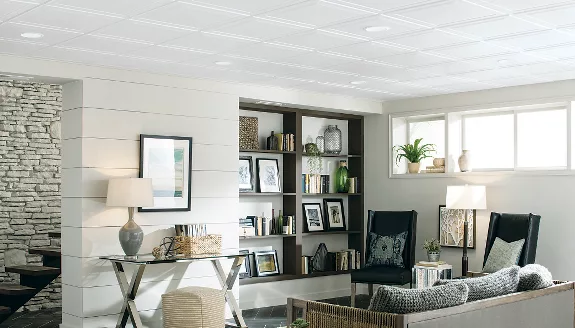
Suspended ceiling tiles are an excellent choice for basements that require a high degree of flexibility and practicality. With this system, ceiling tiles are hung from a grid, making it easy to install, remove, and replace tiles as needed.
This option is ideal for basements with exposed pipes, ducts, or wires, as the ceiling tiles can effectively cover and conceal these elements. Additionally, suspended tiles are perfect for soundproofing and improving acoustics, making them an excellent choice for home theaters, music rooms, or even workout spaces.
There are many design options available for suspended ceilings, from simple, plain tiles to decorative ones with textures or patterns that can add style to the space.
8. Modern Metal Ceilings for a Sleek Look
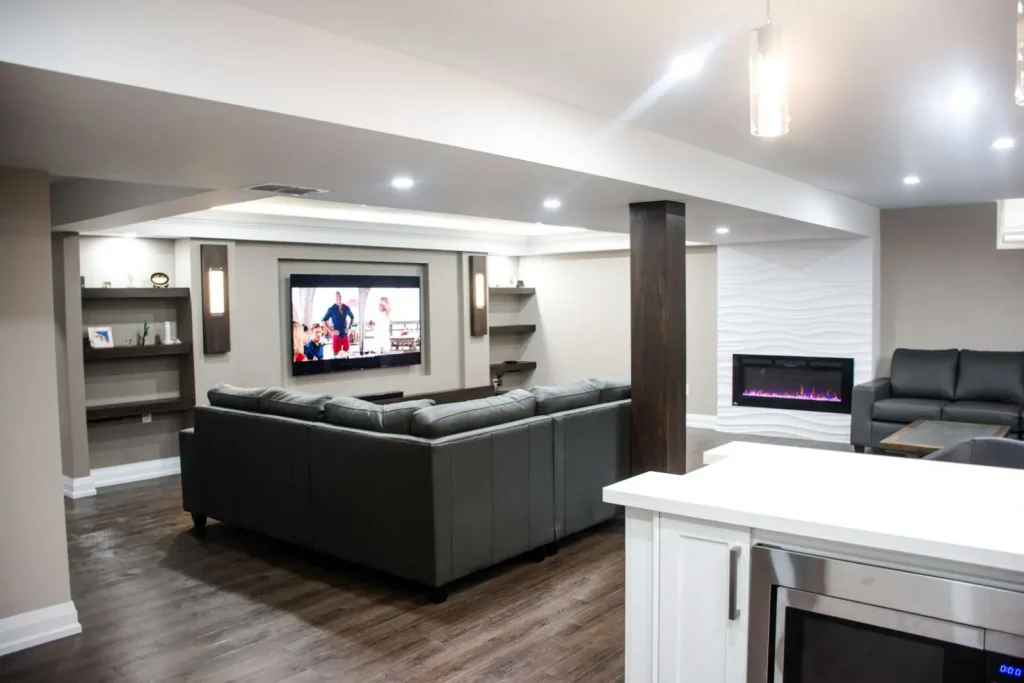
For a more cutting-edge, modern aesthetic, a metal ceiling might be just what your basement needs. Metal ceilings are sleek, durable, and perfect for contemporary spaces that need a touch of sophistication and edge.
This type of ceiling works well in basements designed for entertainment or gatherings, such as game rooms, home bars, or media rooms. You can go for large metal panels for a clean, industrial feel or opt for smaller tiles for a more refined look.
Metal ceilings reflect light, making them a great choice for darker basements where you need to boost brightness. To soften the hard edges of metal, balance the ceiling with softer textures like plush rugs, velvet cushions, or wooden accents.
9. Paint the Ceiling a Bold Color
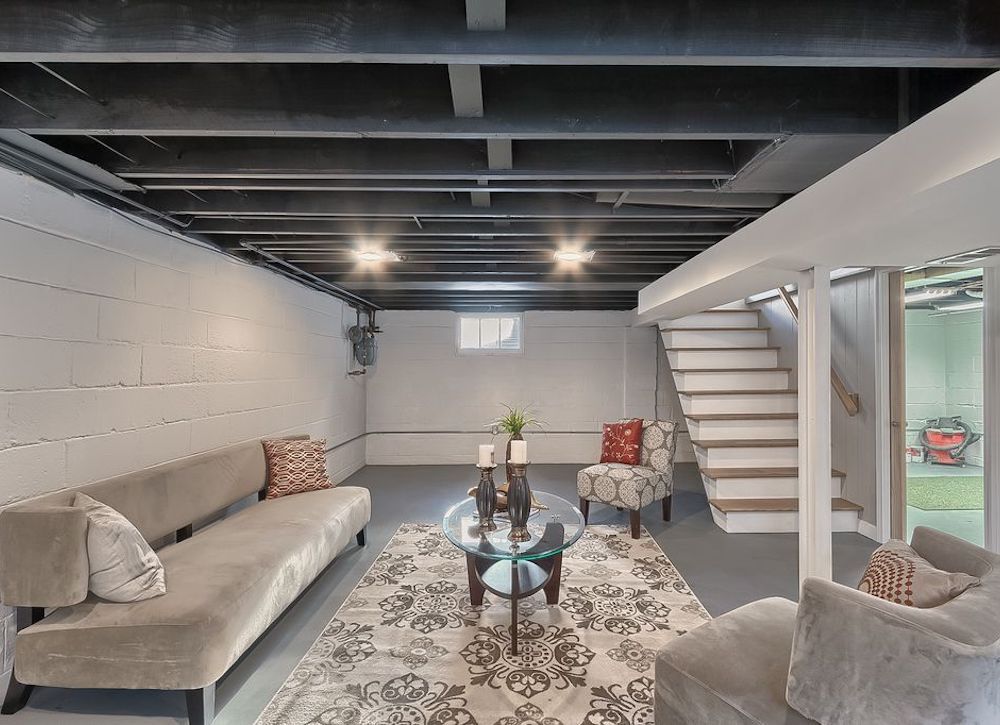
If you’re looking to make a bold statement in your basement, don’t overlook the ceiling. Painting the ceiling a bright or dramatic color can be a fantastic way to add personality and flair to the space.
Whether you choose a deep navy blue, rich forest green, or a striking black, a bold-colored ceiling creates an unexpected focal point in the room. This design works well in basements that are used for more intimate or cozy functions, like home theaters, game rooms, or lounges, where a darker ceiling can make the space feel more intimate.
When choosing a bold ceiling color, make sure the walls and flooring are more neutral to avoid overwhelming the space. Complement the ceiling color with accent furniture or artwork to tie the look together.
10. Acoustic Ceilings for Noise Control
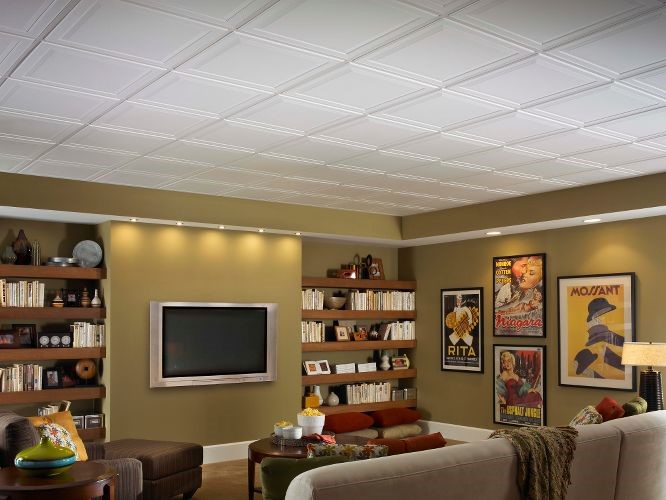
If you’re turning your basement into a media room, home theater, or music studio, noise control is likely one of your top priorities. Acoustic ceiling tiles are the perfect solution for absorbing sound, reducing echoes, and creating a more comfortable environment for watching movies or listening to music.
Acoustic tiles come in various styles, from basic foam panels to more decorative options that still deliver the same noise-dampening benefits. These tiles can also help maintain privacy in your basement, particularly in multi-level homes where sound might travel between floors.
For an even quieter basement, consider pairing acoustic ceilings with carpeting or rugs on the floor, soft furniture, and heavy curtains on the windows to further minimize noise.
11. Ceiling Wallpaper for Texture and Pattern
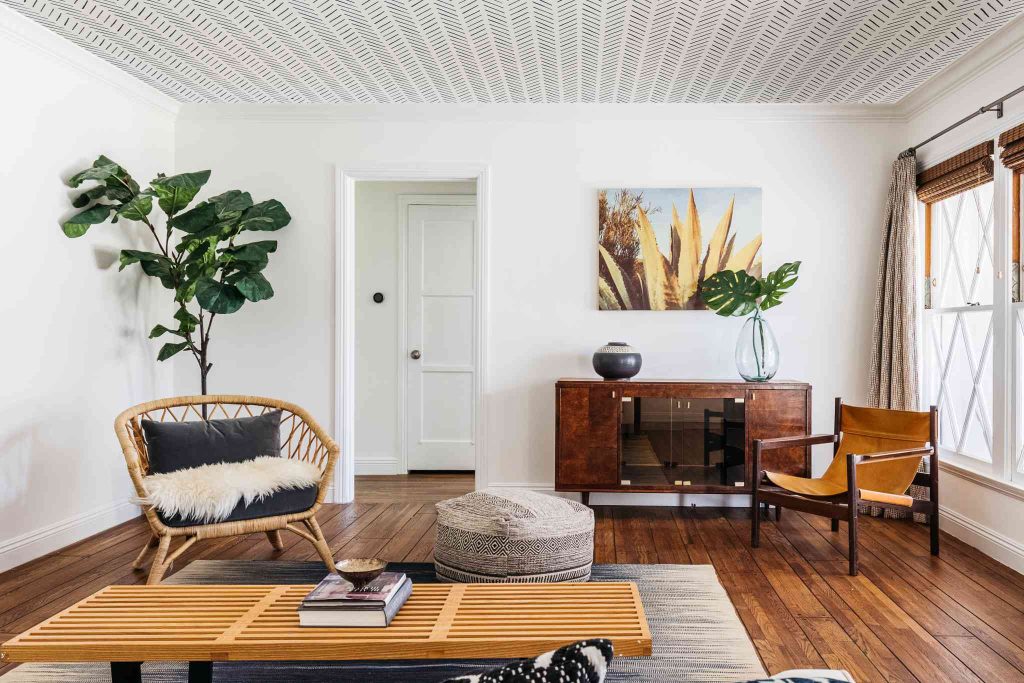
Wallpaper isn’t just for walls; it can also be a stunning addition to your basement ceiling. Ceiling wallpaper comes in a variety of textures and patterns, from geometric designs to floral prints and faux finishes, making it a versatile choice for adding personality and style.
If you want a more understated look, opt for neutral tones or subtle textures that blend seamlessly with the rest of the space. For a more dramatic effect, choose bold, large-scale patterns that become a focal point of the room.
Ceiling wallpaper works best in spaces where you want to create a unique, personalized atmosphere, such as bedrooms, living rooms, or home offices in the basement.
12. Faux Tin Ceilings for Vintage Appeal
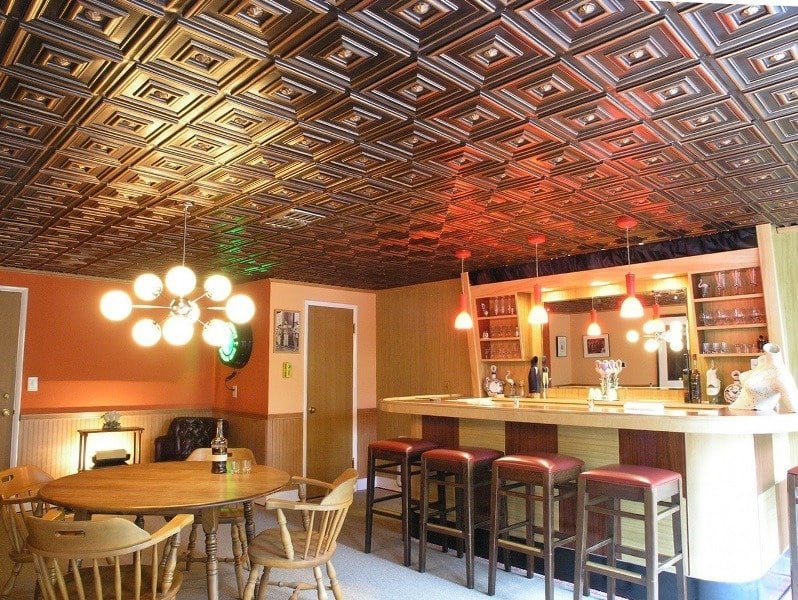
If you’re drawn to vintage or retro-inspired design, a faux tin ceiling might be just what your basement needs. Faux tin tiles are lightweight and much more affordable than traditional tin, while still offering that classic, vintage charm.
These tiles come in a variety of patterns, from simple and elegant to more ornate designs that add a touch of luxury. Faux tin ceilings are perfect for basements that double as home bars, game rooms, or even laundry rooms where you want to incorporate some old-world character into the space.
13. Mirror Ceilings to Create a Sense of Space
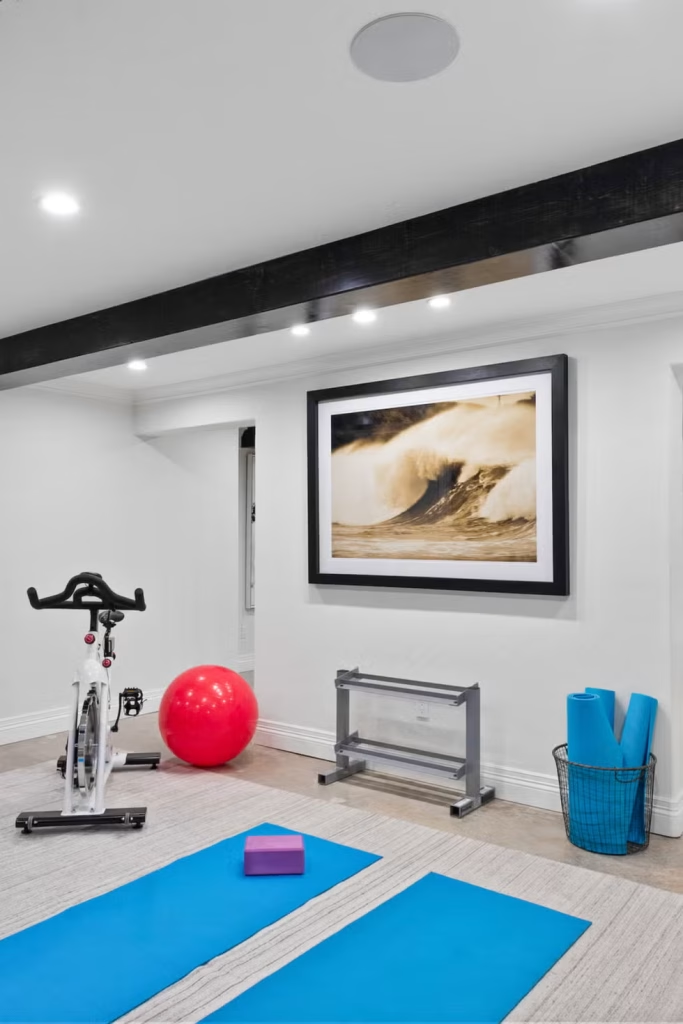
One of the most creative ways to visually enlarge a basement is by incorporating mirrors into the ceiling design. Mirrored ceilings reflect light and give the illusion of a much larger space, making them ideal for smaller or windowless basements.
Not only do mirrored ceilings add a touch of glamour and drama, but they also help maximize the light in the room, making the basement feel brighter and more open. To soften the reflection, balance the mirrored ceiling with soft, plush furnishings or textiles like throw pillows, curtains, or rugs.
This ceiling design works especially well in entertainment-focused basements, such as home theaters, lounges, or even dance studios, where the mirror effect can add fun and flair.
14. Skylights for Natural Lighting
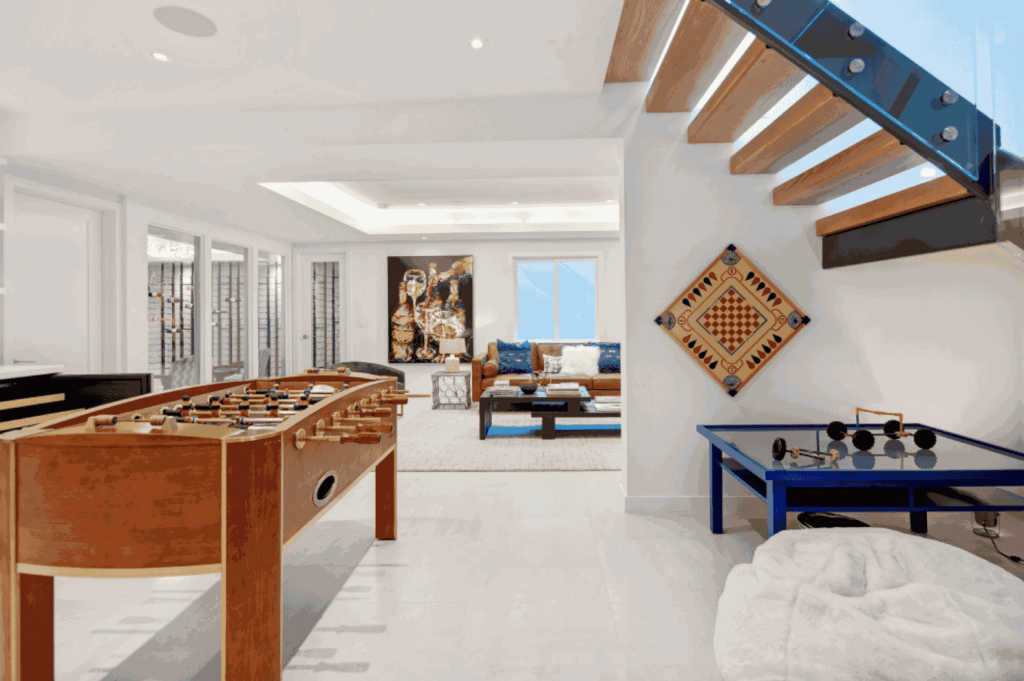
Basements are often notorious for their lack of natural light, but adding skylights to the ceiling is an excellent way to brighten up the space. Skylights can make your basement feel more open and airy by letting in natural sunlight, which is especially valuable in windowless or subterranean basements.
There are several types of skylights, including fixed, vented, or tubular options, each offering different benefits. Fixed skylights are great for providing constant natural light, while vented ones can offer ventilation, improving airflow in the space. Tubular skylights are ideal for smaller basements, as they provide the same benefits but with a more compact design.
Skylights work well in a variety of basement settings, including home offices, gyms, or living areas. They can completely change the atmosphere, making the space feel less like a basement and more like a bright, open living area.
15. LED Lighting Integrated into the Ceiling
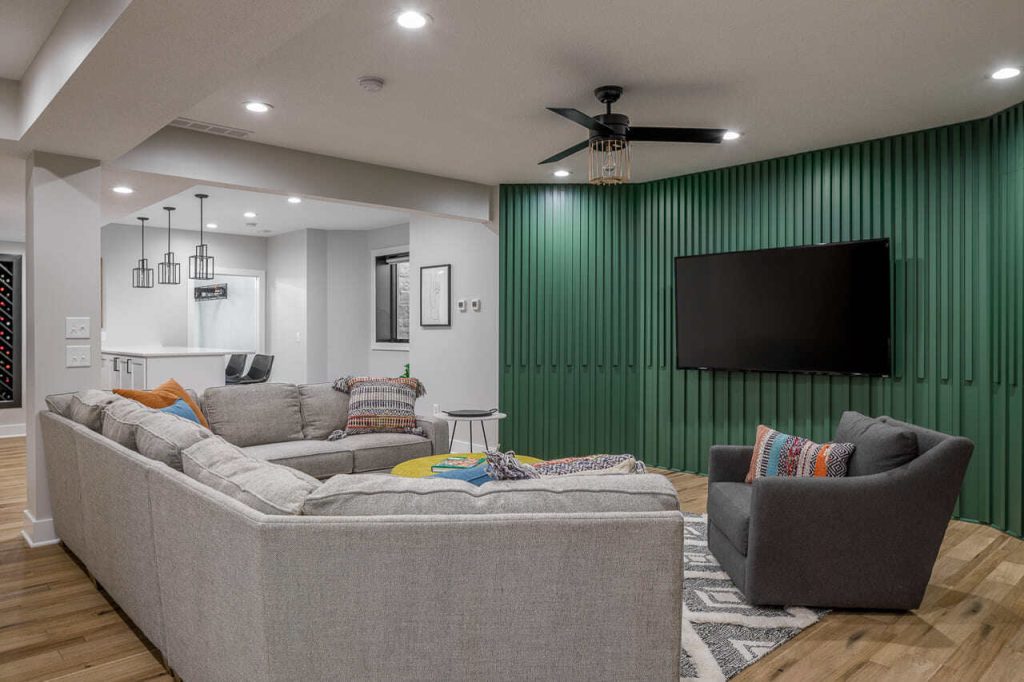
Lighting can make or break a room’s ambiance, and when integrated directly into the ceiling, it creates a seamless, modern look. LED strip lights or recessed lighting are popular choices for basement ceilings, providing subtle illumination without cluttering the space.
LED lighting is incredibly versatile, allowing you to adjust the brightness and even change colors to suit different moods or tasks. For instance, in a home theater, dimmable LED lighting will set the perfect cinematic atmosphere. In a basement office, bright LEDs can provide clear, focused light for working.
You can install LED lights around the perimeter of the ceiling or incorporate them into design elements like tray or coffered ceilings to highlight their features. The minimalistic, energy-efficient nature of LEDs makes them perfect for modern, stylish basement designs.
16. Paint a Starry Sky for a Unique Touch
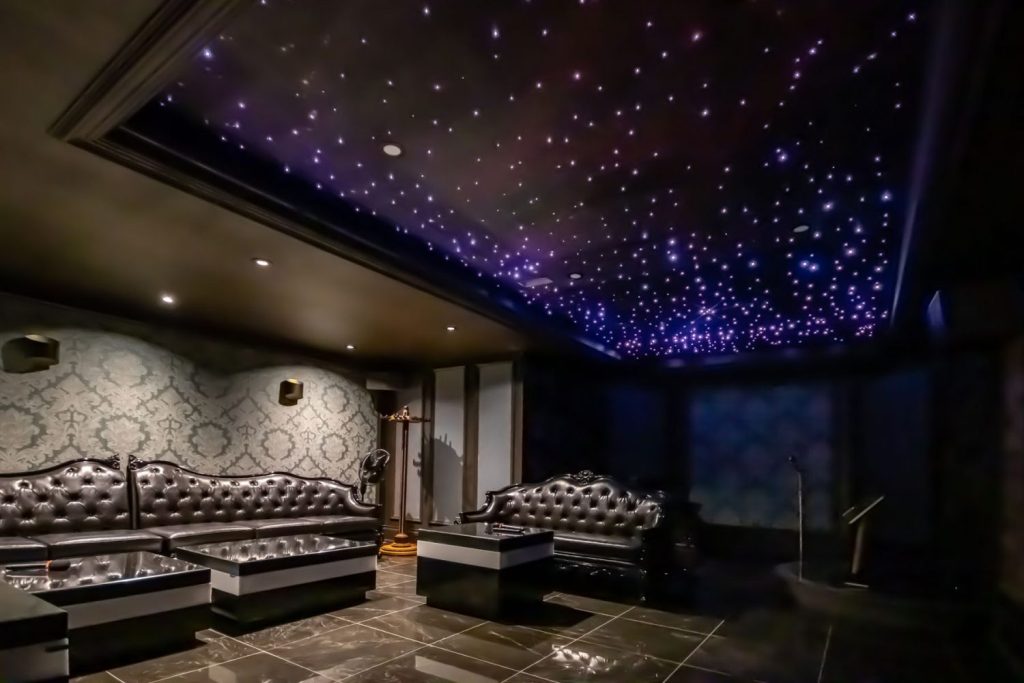
For a whimsical, magical touch in your basement, consider painting a starry sky on your ceiling. This option is perfect for basements designed for children’s playrooms, bedrooms, or even for adult spaces like lounges or home theaters where you want to create a relaxing, otherworldly feel.
To achieve the starry sky effect, start with a dark blue or black base color, then use glow-in-the-dark paint to add stars, planets, or even galaxies. The result is a fun, relaxing atmosphere that can make your basement feel like an escape from the ordinary.
This ceiling design is also great for adding interest to a basement with low ceilings, as the painted stars can help create the illusion of depth and height.
17. Rafter Ceilings for a Rustic Feel
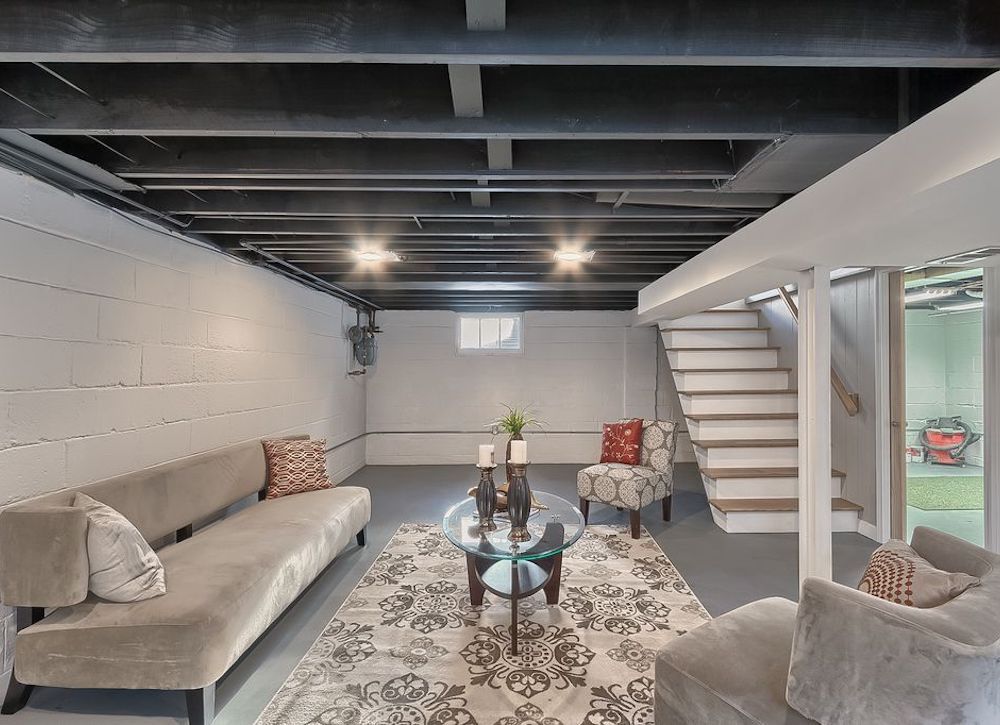
Rafter ceilings add a distinct rustic flair to any basement. Exposed rafters, often made from wood, create an inviting, farmhouse-style aesthetic that’s both charming and practical. Rafters are perfect for open, airy basements with high ceilings and plenty of space to showcase their natural beauty.
To keep the look rustic, leave the rafters in their raw, natural state, or paint them in a light, neutral color to brighten the space. Pair the rafters with other natural materials like stone, wood paneling, and vintage furniture for a cohesive look.
Rafter ceilings are particularly suitable for basements that function as living rooms, home bars, or game rooms where comfort and warmth are key.
18. Minimalist Ceilings for a Clean Look
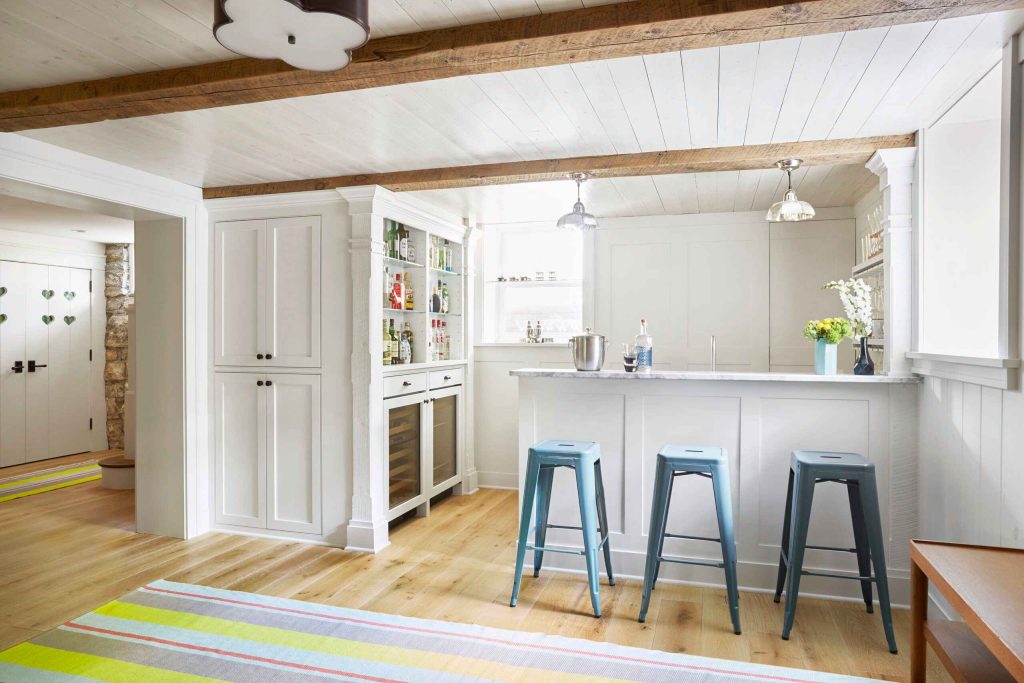
For those who prefer simplicity and elegance, a minimalist ceiling design is the way to go. This style embraces clean lines, neutral colors, and uncluttered spaces, making it perfect for modern, contemporary basements. A minimalist ceiling will make the basement feel more spacious, calm, and inviting.
Minimalist designs often involve flat ceilings with a smooth finish, sometimes paired with subtle lighting features or hidden storage. You can use materials like drywall, plaster, or concrete for a sleek, smooth look.
To achieve a minimalist basement, keep the furniture and decor streamlined as well, opting for simple, functional pieces that don’t overpower the space. The result is a modern, chic basement that feels like an extension of your home’s clean, sophisticated design.
19. Vintage Ceiling Tiles for a Retro Look
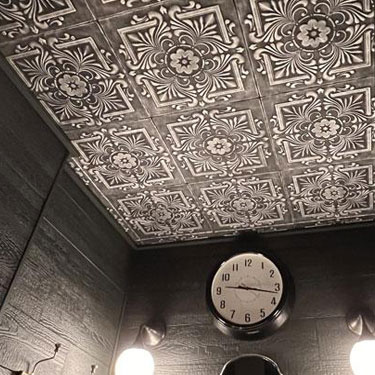
If you love nostalgia and classic designs, vintage ceiling tiles can add instant character to your basement. These tiles, often made from tin or pressed metal, evoke a retro charm that works well in vintage or industrial-style basements.
Faux versions of vintage ceiling tiles are also available, offering the same look with easier installation and maintenance. Choose tiles in a muted finish to maintain a rustic or antique vibe, or opt for a shiny, metallic finish to make the ceiling pop.
Vintage ceiling tiles work well in areas like home bars, libraries, or music rooms where you want to create a lively, retro atmosphere while still incorporating functional design.
20. Vaulted Ceilings for a Lofty Feeling
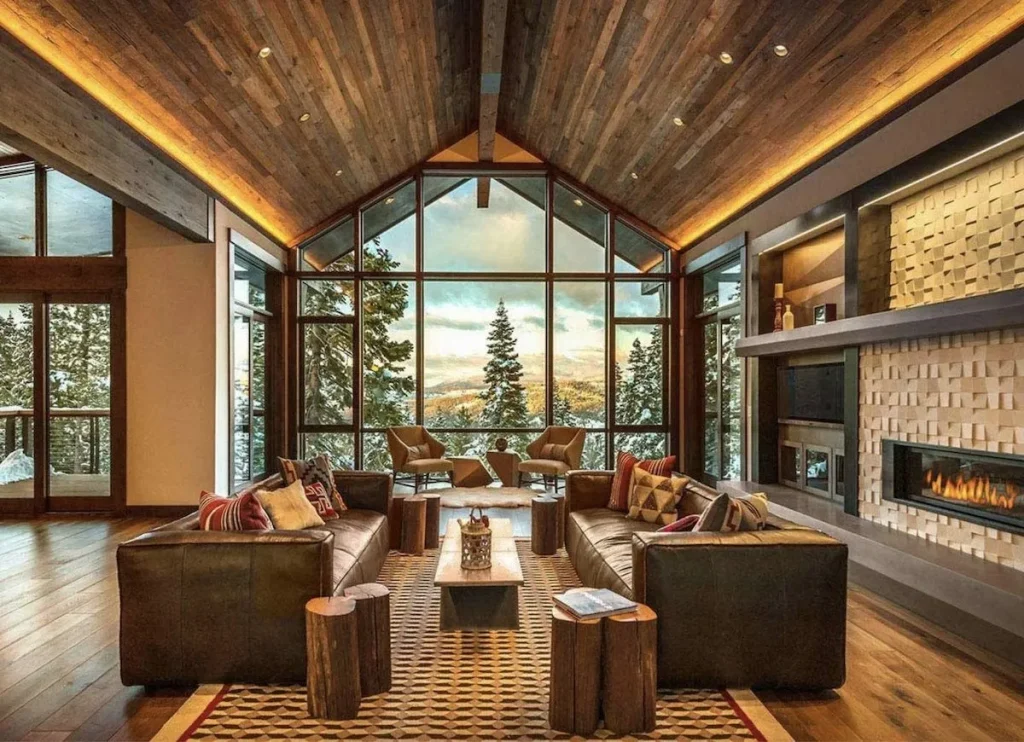
If you want to create the illusion of space and grandeur in your basement, consider installing vaulted ceilings. Vaulted ceilings rise higher than the standard flat ceiling, giving the room an open, airy feeling that makes it seem much larger than it really is.
Vaulted ceilings are especially beneficial in basements that have sloped or angled rooflines. They make the most of the vertical space and help to avoid a cramped, low-ceilinged atmosphere.
To accentuate a vaulted ceiling, incorporate tall windows or skylights, which will bring in even more natural light and make the space feel even more expansive. This ceiling style works beautifully in basements that function as great rooms, yoga studios, or home theaters.
21. Fabric Ceiling Panels for Softness and Comfort
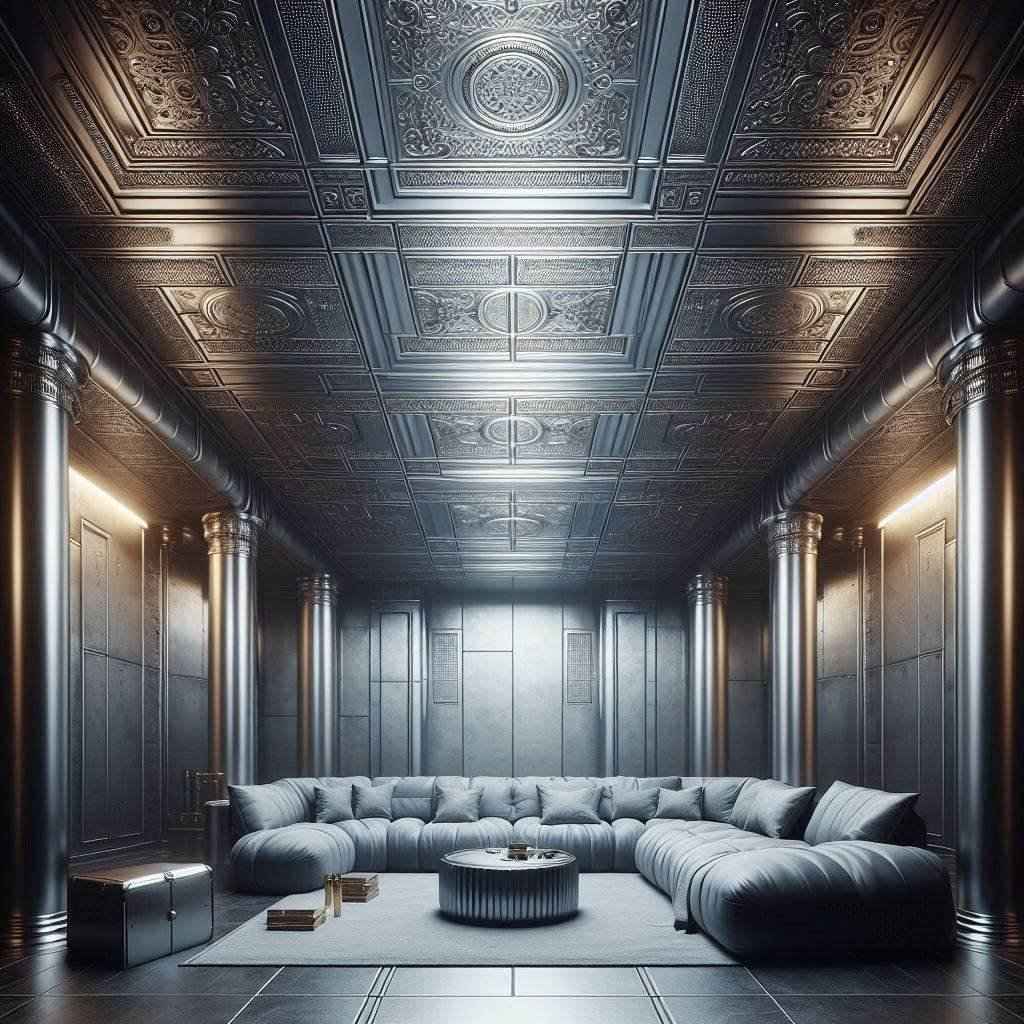
For a cozy, luxurious atmosphere, fabric ceiling panels are an excellent choice. These panels, often made from fabric or soft material, add texture and warmth to the room. Fabric ceilings are especially great for dampening sound, making them ideal for basements that double as home theaters or music rooms.
Fabric ceilings can be designed with various textures, patterns, and colors to match your decor. You can drape fabric across the ceiling in swags or use panels for a more structured look. A soft, plush fabric ceiling can make a basement feel like a sanctuary, providing both comfort and style.
Pair the fabric ceiling with plush furniture and textiles like velvet cushions, soft rugs, and throw blankets to create a cozy, welcoming environment.
22. Glass Ceilings for an Open, Light-Filled Space
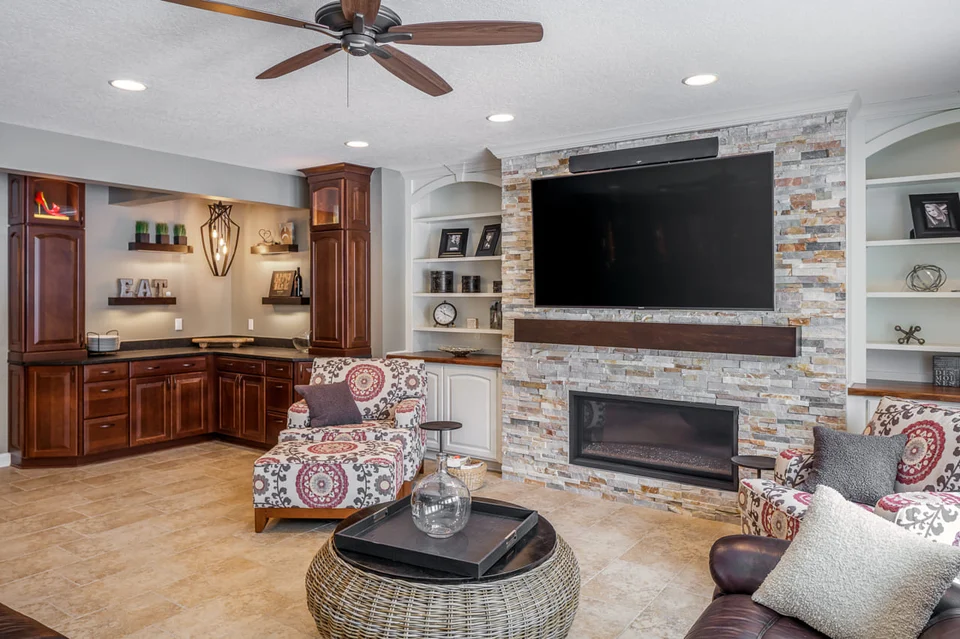
For a truly unique and bold design, glass ceilings are an eye-catching option that can completely transform your basement. Glass ceilings create a sense of openness and light, allowing you to gaze at the sky above or create a seamless flow from the outdoors to your basement.
This design works best in basements that are above ground or have access to the outdoors, as you want to enjoy natural light and views of the outside. Keep in mind that glass ceilings may require extra maintenance to keep them clean and free of debris.
Glass ceilings work beautifully in modern, minimalist designs, and they pair well with sleek furniture and contemporary decor.
23. Ceiling Molding for a Polished Finish
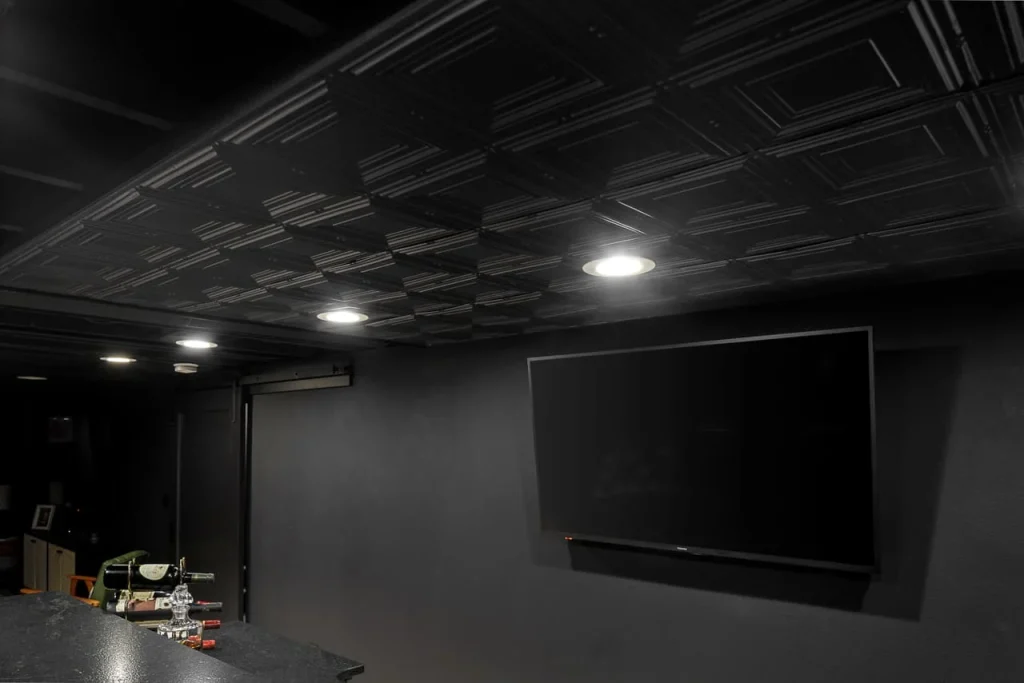
If you want to add a polished touch to your basement, consider adding ceiling molding. Ceiling molding, also known as crown molding, provides a sophisticated finish to the edges of the ceiling, making the room feel more complete and refined.
You can choose from various styles of molding, from simple and understated to ornate and intricate. For a modern look, opt for simple, clean lines. For a more traditional or classic style, go for detailed, decorative molding.
Ceiling molding works well in basements used for formal gatherings or those designed to look more like living spaces than traditional basements, such as home offices or dining areas.
24. Painted Ceiling Beams for Character
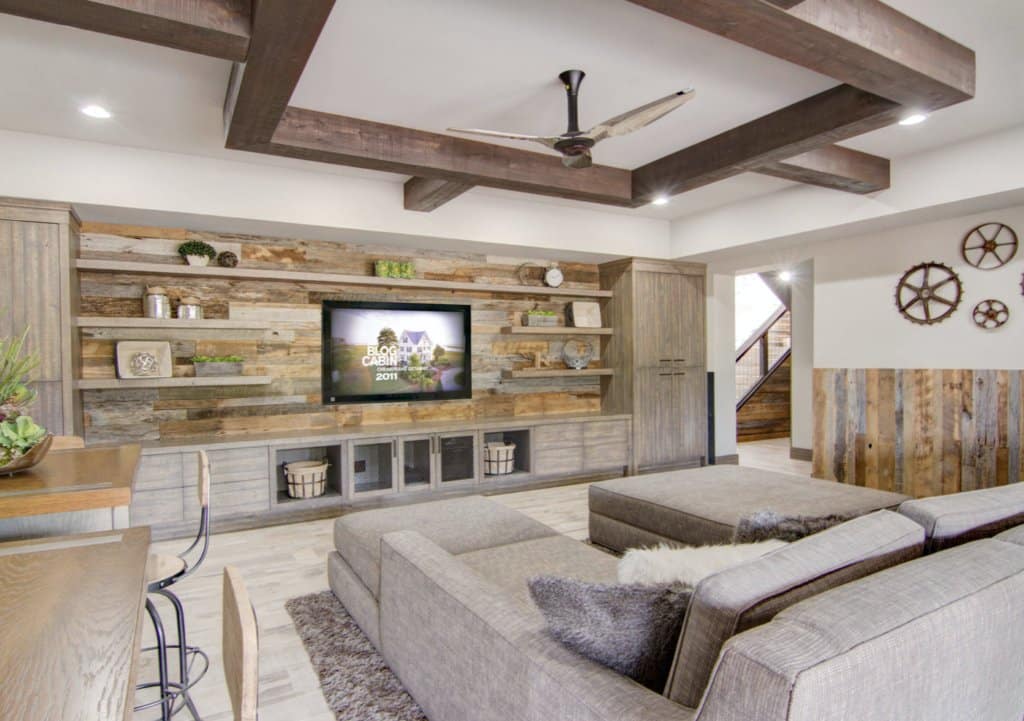
If you already have exposed ceiling beams, painting them a bold color can add character and personality to the space. Whether you choose a deep, dramatic color like navy blue or a lighter, softer shade like cream, painted beams make a strong design statement.
This design works particularly well in rustic or farmhouse-style basements, where the beams are a central element of the room. Painting the beams can modernize the space, making it feel fresh while still maintaining its rustic charm.
25. Recessed Lighting for Subtle Elegance
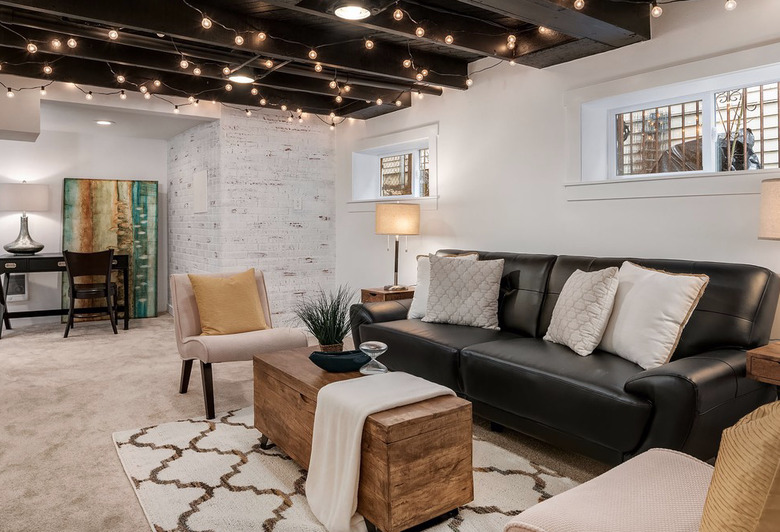
Recessed lighting is a subtle, elegant way to add light to your basement without sacrificing style. Installed directly into the ceiling, recessed lights are perfect for providing even illumination without taking up space or drawing attention away from other design elements.
Recessed lighting works well in basements with low ceilings, as it doesn’t add any height, making the space feel open and clean. Use recessed lighting in combination with other ceiling features, like coffered ceilings or tray ceilings, to highlight their architectural beauty.
26. Fabric Drapes for a Soft, Elegant Ceiling
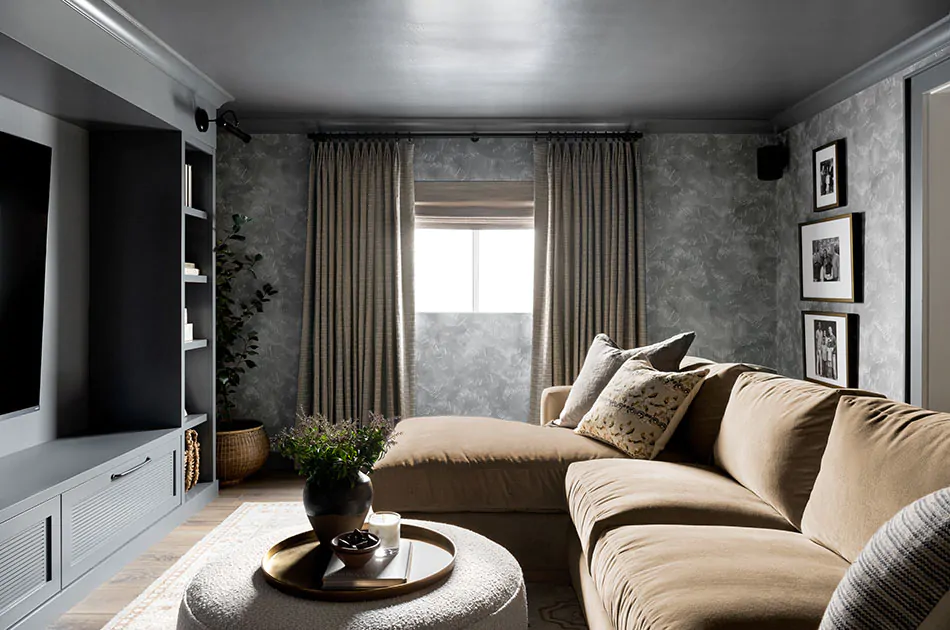
Fabric drapes can transform your basement ceiling into a soft, elegant space. Hanging drapes from the ceiling creates a gentle, flowing look that adds a sense of luxury and comfort to the room.
This design is perfect for basements used as bedrooms, lounges, or reading rooms, where the goal is to create a cozy and relaxing environment. Choose lightweight fabrics like linen or silk for a dreamy effect, or go for heavier fabrics like velvet for a more dramatic touch.
27. Ceiling with Hidden Storage
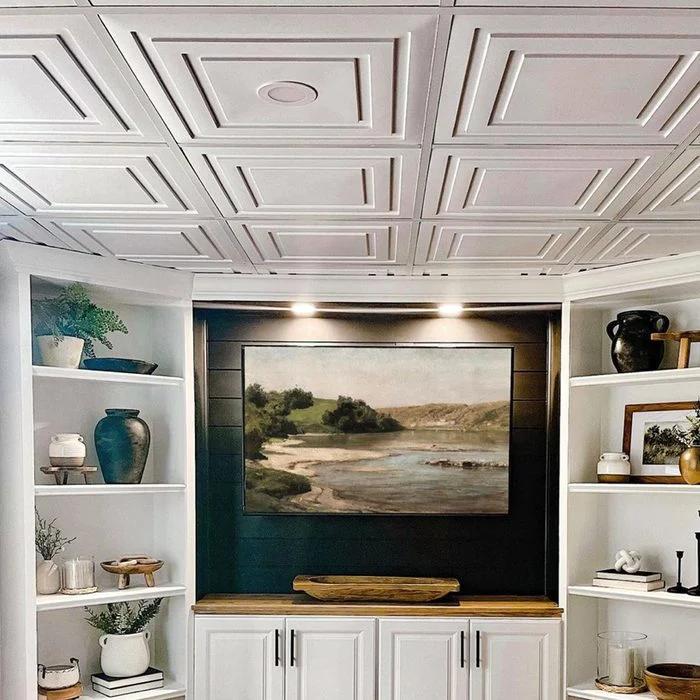
Last but not least, consider a ceiling design that incorporates hidden storage. Whether it’s through the use of built-in shelves or concealed compartments, using the ceiling for extra storage can help you maximize every inch of space in your basement.
Hidden storage is perfect for keeping clutter out of sight and maintaining a clean, organized environment. Use this design in basements that function as home offices, craft rooms, or storage spaces, where maximizing every inch of space is essential.
Conclusion
Your basement ceiling doesn’t have to be an afterthought. With these 27 creative ceiling ideas, you can transform your basement into a stylish, functional, and inviting space that suits your personal taste and needs. Whether you’re looking for a bold design statement or a subtle, elegant touch, there’s an idea here for everyone.
Remember, the ceiling is an often-overlooked area that can make a huge difference in the overall feel of the space. So, get creative and start thinking about how you can incorporate some of these ideas into your basement!
Don’t forget to share your own basement ceiling ideas or transformations in the comments— we’d love to hear how you’ve made your basement a beautiful and functional part of your home!
